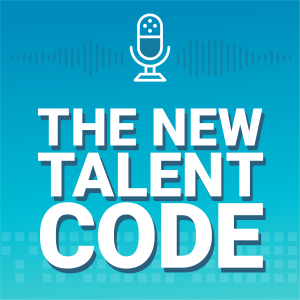
Deregulating AI in HR: Better outcomes, transparency, and compliance
 2022-12-20
2022-12-20
Since inception, the U.S. Equal Employment Opportunity Commission (EEOC) has focused on preventing and remedying unlawful employment discrimination and advancing equal opportunity for all in the workplace.
When it comes to AI, existing legal mechanisms also apply. Commissioner Keith Sonderling of the EEOC warns that the public should know that government agencies lack the requisite knowledge to regulate AI effectively. He advocates for organizations to self-regulate and self-audit so they don’t stifle critical innovation in this space.
"The most effective solution is a deregulatory approach that properly utilizes the existing employment discrimination framework and the resources already available to agencies,” Sonderling wrote in this co-authored opinion arguing for a deregulatory approach to the use of AI in the workplace.
In this episode, Sonderling breaks down some of the leading complexities behind AI and employment laws, including:
- Why ensuring that AI and other workplace technologies are designed and deployed to comply with existing civil rights laws, a top priority for the EEOC - How AI can make HR processes more transparent and explainable - Why a deregulatory approach to AI in HR puts greater emphasis on outcomes, and how that’s positive for antidiscrimination and innovation practices
Don’t miss a chance to hear more from Sonderling on AI’s role in HR:
- “It's no longer a conversation of, ‘Am I going to use HR technology?’ It's about how we will use that technology, for what purpose we will use that technology, and how we use it with the longstanding civil rights laws that we're all subject to.” [7:27]
- “Just like all other areas of the law, employers have a duty to comply with the law now. They don't need to wait for enforcement. They don't need to wait for large litigations. They need to ensure that the tools they have now comply with long-standing civil rights laws without the distraction of potential new laws.” [13:13]
- “A lot of larger companies need to hire a lot of people very quickly, and they can’t do it at this point without the assistance of some sort of technology.” [18:35]
- “Technology can look through job descriptions and tell you what lines may no longer be necessary and have historically prevented people from certain backgrounds from entering the workforce.” [24:13]
More Episodes
 2022-06-21
2022-06-21
Create your
podcast in
minutes
- Full-featured podcast site
- Unlimited storage and bandwidth
- Comprehensive podcast stats
- Distribute to Apple Podcasts, Spotify, and more
- Make money with your podcast
It is Free
- Privacy Policy
- Cookie Policy
- Terms of Use
- Consent Preferences
- Copyright © 2015-2024 Podbean.com




